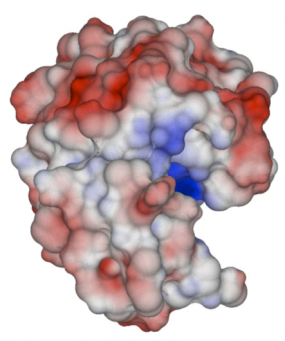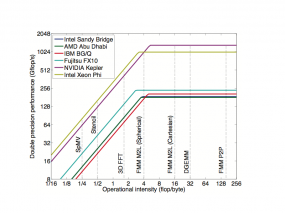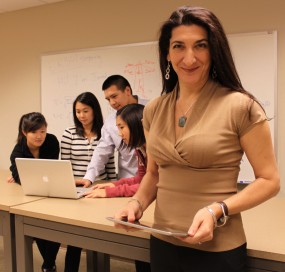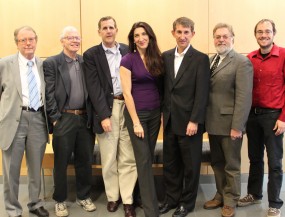Lorena A. Barba group

Loading...
Finding the Force—Consistent Particle Seeding for Satellite Aerodynamics

At AIAA SciTech 2014 —the "largest event for aerospace research, development and technology in the world"—, this paper is part of the AIAA Modeling and Simulation Technologies Conference, in the session "Modeling and Simulation of Space Systems" (MST-07), to be held Jan. 17 (8:00 AM to 12:00 PM). The first author and speaker, J. Brent Parham, was a... Continue »
Accepted: Biomolecular electrostatics solver using Python and GPUs

Submitted: 20 September, 2013. Accepted: 24 October, 2013. This paper presents a study of the effect of solvent-filled cavities and Stern layers in a biomolecular electrostatics solver based on a boundary integral formulation. The tool for this study was the PyGBe code: a solver for biomolecular electrostatics using Python, GPUs and boundary elements. To determine... Continue »
Submitted: "Lift and wakes of flying snakes"

Submitted: September 16, 2013. Accepted in Physics of Fluids: February 10, 2014. This paper presents a computational study of the aerodynamics of an anatomically correct cross-section of Chrysopelia paradisi, the flying snake. These animals inhabit the canopy of rainforests in East Asia, and have a very peculiar method of locomotion: they jump from tree branches, change... Continue »
How will the fast-multipole method fare in the exascale era?

SIAM News (Vol. 46, issue 6) has published on the front page our piece about the future of algorithms in the exascale era. This piece was written by invitation on the aftermath of a very successful SIAM Conference on Computational Science and Engineering, held in Boston last February. At this conference several minisymposia focused on... Continue »
Barba at the NAE FOEE Symposium

Professor Barba was selected to participate in the National Academy of Engineering (NAE) Frontiers of Engineering Education (FOEE) symposium 2012. Here is a reflective note she wrote after coming back from this event in October 2012. Engineering education changes slowly. At the first engineering schools in America—West Point (1819), Rensselaer Polytechnic Institute (1828), University of Virginia (1833)—a professor lectured at... Continue »
New teraflop/s GPU cluster coming to BU

BU's College of Engineering, Center for Computational Science (CCS), and Information Systems & Technology (IS&T) announce a significant expansion to the facilities for research computing with the acquisition of a GPU-accelerated cluster. At 80 teraflop/s in peak double-precision performance, this system will be the fastest ever deployed at BU. The new computing resource was made possible by... Continue »